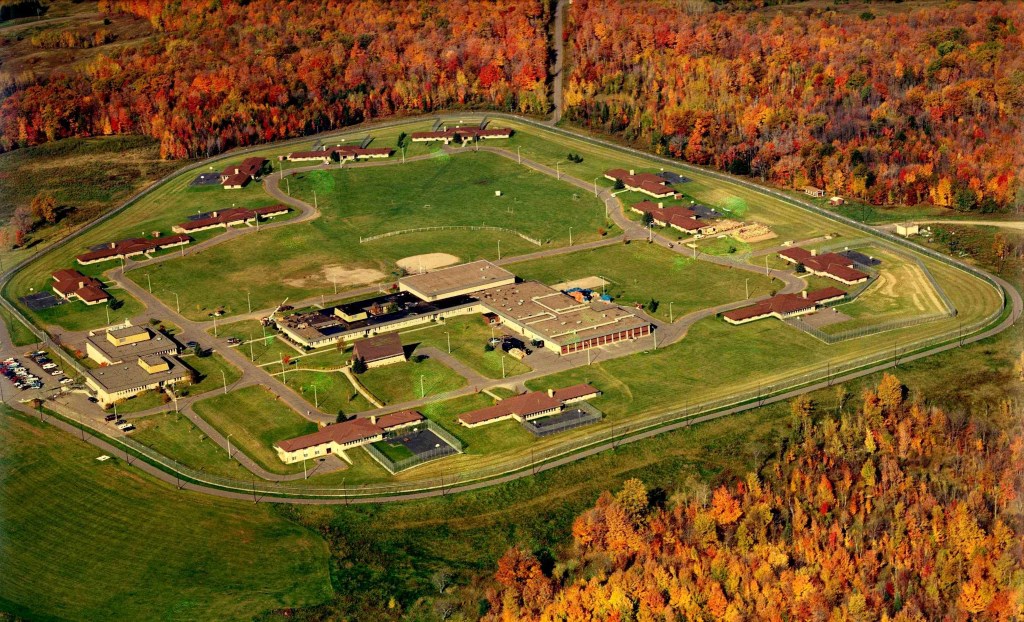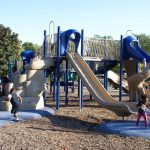Pandemic Causes Youth Prison Problems
New report finds switch to virtual education and other changes taking a toll on youth, staff at Lincoln Hills, Copper Lake.
The latest report from a court appointed monitor of the state-run youth prisons at Lincoln Hills and Copper Lake shows that the pandemic is taking a toll on the children and staff.
The monitor, Teresa Abreu, visited the facility in December. She wrote: “There is a definite change in the overall atmosphere from the last visit.”
One of the biggest issues affecting the day-to-day atmosphere at the facility, she wrote, was the switch to virtual learning. The children are not receiving the same level of education and staff that work in the living units are complaining of an increased workload now that they have to help students with Zoom classes and their schoolwork.
Along with major changes to the education programs at the facility have come adjustments in operations to mitigate the spread of COVID-19. Staff follow guidelines from the Centers for Disease Control and Prevention on personal protective equipment. Admissions occur every two weeks and youth are quarantined for 14 days and medically supervised before they join the general population.
The changes to education and programming are having a “negative impact on overall youth behaviors,” the monitor reported, leading to increases in fights, assaults and the use of restraints and isolation. And all of this will “have long-term impacts on issues such as the overall facility climate, safety, and length of stay.”
“It is clear by the data, shift reports, and youth and staff attitudes, that boredom is taking its toll,” the monitor wrote.
The monitor wrote that the pandemic is clearly contributing to some of the problems noticed during the December visit. But those problems might be mitigated, she added, “if additional support staff were on site providing more normalized facility operations, primarily around education, treatment, mental health services, etc.”
The “normalization of facility operations would go a long way toward reducing incidents of violence and other behavioral issues stemming from the lack of meaningful programs,” she wrote.
The monitor’s report recommends returning in-person education to the facility “as soon as reasonably possible.” While the number of educational hours has been consistent, the quality of education has been greatly reduced. Youth are having trouble with virtual learning and many are complaining about “not learning anything.” The children are “bored and wanting to go to school” and are complaining of not getting outside time.
The monitor also reported that staff complained about “a lack of ways to hold youth accountable as well as a lack of incentives that will foster improved behaviors.” Staff said there were now “less ‘tools’ available to manage behavior.”
In recent reports, the monitor has noted that the use of restraints — physical and mechanical — has risen. This, she writes, “is very typical of a facility transitioning from and eliminating the use of OC (pepper spray) as staff develop new skills for deescalation and behavior response techniques.”
Restraints are used to “subdue an otherwise uncontrollable youth” to prevent injury to them or others. The rise in the use of restraints, the monitor wrote, “is more reflective of the lack of meaningful education and other programs as a result of the operational changes occurring as a result of the pandemic.”
More about the Coronavirus Pandemic
- Governors Tony Evers, JB Pritzker, Tim Walz, and Gretchen Whitmer Issue a Joint Statement Concerning Reports that Donald Trump Gave Russian Dictator Putin American COVID-19 Supplies - Gov. Tony Evers - Oct 11th, 2024
- MHD Release: Milwaukee Health Department Launches COVID-19 Wastewater Testing Dashboard - City of Milwaukee Health Department - Jan 23rd, 2024
- Milwaukee County Announces New Policies Related to COVID-19 Pandemic - County Executive David Crowley - May 9th, 2023
- DHS Details End of Emergency COVID-19 Response - Wisconsin Department of Health Services - Apr 26th, 2023
- Milwaukee Health Department Announces Upcoming Changes to COVID-19 Services - City of Milwaukee Health Department - Mar 17th, 2023
- Fitzgerald Applauds Passage of COVID-19 Origin Act - U.S. Rep. Scott Fitzgerald - Mar 10th, 2023
- DHS Expands Free COVID-19 Testing Program - Wisconsin Department of Health Services - Feb 10th, 2023
- MKE County: COVID-19 Hospitalizations Rising - Graham Kilmer - Jan 16th, 2023
- Not Enough Getting Bivalent Booster Shots, State Health Officials Warn - Gaby Vinick - Dec 26th, 2022
- Nearly All Wisconsinites Age 6 Months and Older Now Eligible for Updated COVID-19 Vaccine - Wisconsin Department of Health Services - Dec 15th, 2022
Read more about Coronavirus Pandemic here
More about the Lincoln Hills and Copper Lake Facilities
- Evers’ Prison Plan Receives Mixed Reviews - WPR Staff - Feb 21st, 2025
- ‘First of its Kind in Wisconsin’ Collaboration Will Support Disabled Incarcerated Youth - Andrew Kennard - Dec 12th, 2024
- MKE County: Tight Budget Forces Difficult Vote on Housing, Juvenile Justice - Graham Kilmer - Nov 1st, 2024
- Letters from Evers, Republicans Show Clash on Juvenile Corrections - Andrew Kennard - Aug 17th, 2024
- Following Counselor Death, Staff, Family Plead for Help At Lincoln Hills - Andrew Kennard - Aug 16th, 2024
- Lawmakers Grill Wisconsin Prison Officials Over Safety, Employee Death at Youth Facility - Sarah Lehr - Aug 7th, 2024
- Future of Lincoln Hills Remains In Limbo - Isiah Holmes - Apr 12th, 2024
- MKE County: County Youth In State Prisons Declining Again - Graham Kilmer - Jan 15th, 2024
- Legislative Committee Okays $6 Million for 2nd Juvenile Facility - Devin Blake - Oct 1st, 2023
- Some Progress, Still Problems at Lincoln Hills - Isiah Holmes - Jul 9th, 2023
Read more about Lincoln Hills and Copper Lake Facilities here























No one has ever given a reason for the closing of the youth correction facility at Wales in Waukesha County. It was close enough to Milwaukee to have a very adequate pool of staff. It’s location was also convenient for families of incarcerated youth to visit. It was moved up north, imploded, and is costing the State millions of dollars in legal settlements with former inmates.